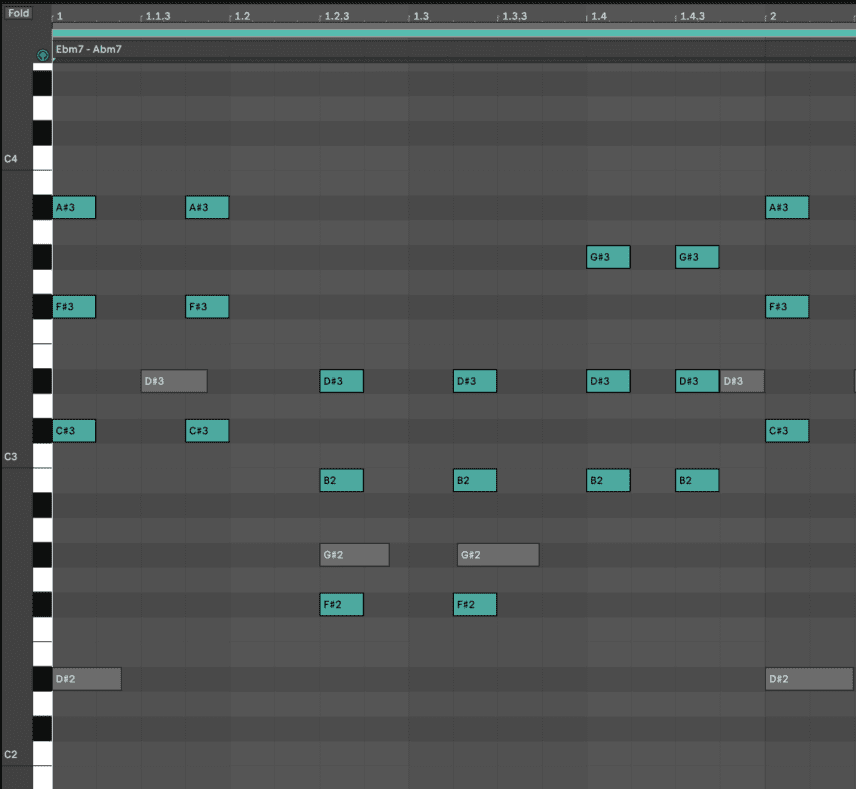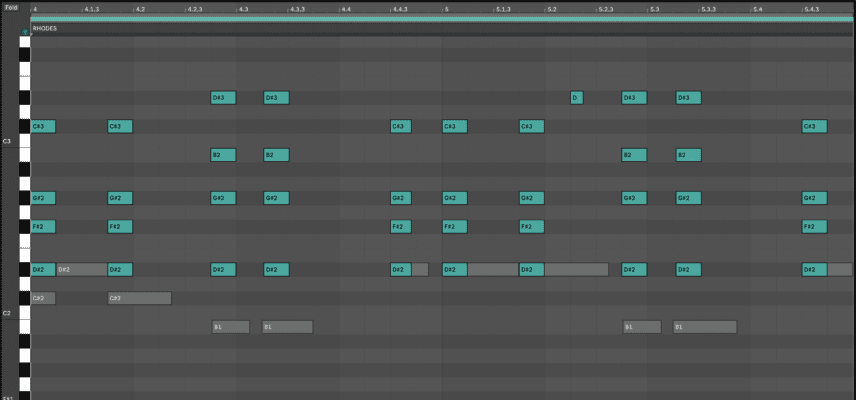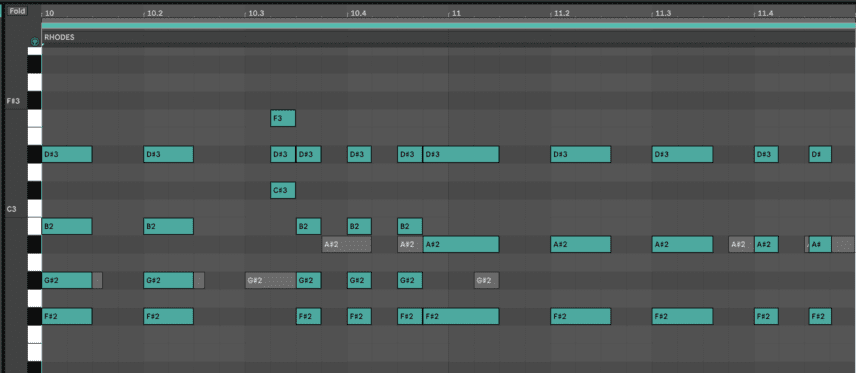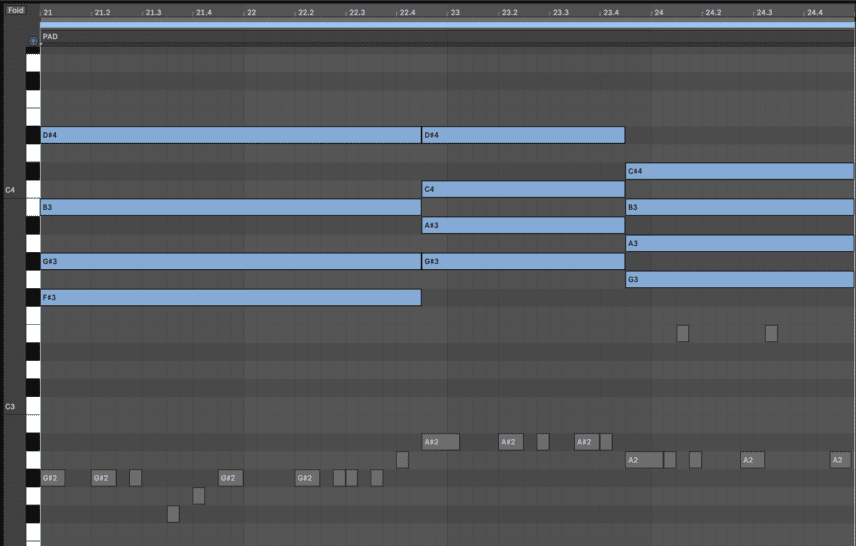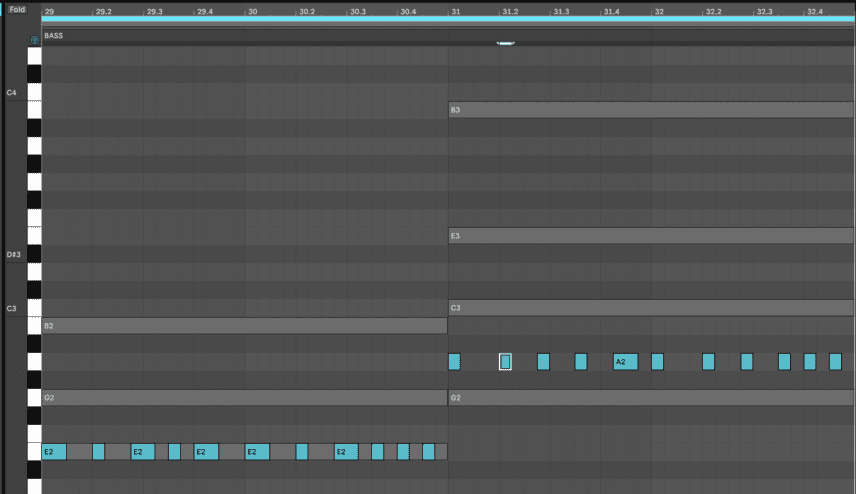In part one of a new two-part Passing Notes series, we break down the house icon’s top chord tricks by analyzing some of his most classic tunes.
Kerri Chandler is one of the pioneers of house music. He is the definition of consistency, delivering a steady supply of dancefloor gems through his own productions or his label Kaoz Theory. As he has spent decades immersed in music, we thought taking a detailed look at his chord progressions would be a tremendous learning opportunity, and we were right. After some analysis, we discovered that the now 50-year-old artist’s chords and bass lines contain many tricks that he has used regularly throughout his 100-or-so releases.
In this article, we break down these go-to chord tricks by analyzing the chord progressions of ten classic Kerri tunes. To do this, we took a two- or four-bar loop from each track and recreated the bass, keys and pad parts in Ableton. Please download the project session here to follow along.
First, a quick theory recap about indicating the voicings of more complex chords: when notes other than those in the original triad of the chord are included, these are written using add9 for the second note, 11 for the fourth note, 13 for the sixth note and 7 for the seventh note in the chord’s scale. For example, a simple A minor chord (A – C – E) with B (9th), F (13th) and G (7th) notes also included in the voicing would be written as A minor 7 (13) (add9). The “7” comes first in the order followed by the 11 and 13 in parentheses and then the “add9”.
Let’s get started.
Two-Chord Stab Progressions
Sometimes you just have to keep it simple. Many of Kerri’s most famous tracks are based around a one-bar loop with only two chords. The bass, vocal, effects and samples come and go while the chord stabs keep the energy going for the whole track. ‘The Way It Goes (Track 1)’ is a good example of this.
The loop goes D# minor 7 > G# minor 7. There is a third pair of stabs at the end of the bar, but these are simply a different voicing of Ab minor.
The voicing of these chords—third inversion seventh chords—are extremely common in Kerri’s tracks as we will also see in other examples. This is when the seventh note is at the bottom, followed by the root, third and fifth notes of the chord. In the last two stabs of the bar, he adds the root note an octave higher, as it leads nicely to the high A# note of the D# minor 7 chord on the next downbeat.
Another trick he has used here is omitting the root notes from the stabs, which is not an issue because the bass line has the roots covered.
Finally, note how the bass notes are sometimes not playing at the same time as the stabs. This small trick adds a lot of groove through syncopation and small moments of tension.
Here is our much more MIDI-sounding version of the main loop:
Kerri’s remix of RiskSoundSytem’s ‘The Sound is Yours’ is another example of how he uses two-chord progressions.
The progression is D# minor 7 (11) > B minor (13), with both chords played in a one-bar loop. The last stab of each bar goes back to D# minor early, before the end of the loop. This is a technique used to create anticipation for the next bar.
The D# minor voicing contains G#, the fourth note of D# minor’s chord scale, and C#, the seventh, so it is a minor 7 11 chord. The B minor voicing has a G#, which is the sixth note in the scale of B minor, making it a minor 13 chord. This chord is also inverted, with D# (third) followed by G# (13th), B (root) and then again D# (third).
This inversion is clever as it keeps a very similar pattern to the voicing of the first D# minor chord. The bottom D# and G# notes are left in the same place with only the two new B and D# notes added on top.
Note that KC has not included fifth notes in either voicing. As fifth notes are very common, replacing them with different notes like 11ths or 13ths adds character.
Finally, as we will also see in other examples, the bass does not always play the root note immediately with the chord. C# is the bass note on the first downbeat and then it transitions to the chord’s root, D#. This is another trick that adds a moment of tension before quickly resolving.
Pro Tip: To get better at writing inversions like this, experiment with playing different chords limited to one octave. You’ll be forced to move notes around and this will help you come up with new voicings.
Our loop:
Our last example for this category is ‘Atmosphere’.
The progression is G# minor 7 > D# minor / F#.
Here KC uses his classic third inversion seventh chord for the G# minor voicing, with the seventh note followed by the chord’s normal triad (G# > B > D#). There is a fill-stab in between the third and fourth downbeat, which plays a G# minor 7 11 chord with the addition of the 11th (C#) and seventh (F) notes. Playing different voicings of the same chord back to back is definitely one of KC’s go-to tricks as we also see in ‘The Way It Goes (Track 1)’.
The second chord is a slash chord as a triad is being played over a different root bass note. D#, F# and A are the notes of a D# minor triad but the root bass note in the second bar is F#.
As in ‘The Sound is Yours’, the trick of not going straight to the root bass note is employed in the second bar, with G# being the first note the bass plays as opposed to F#.
Our loop from the track:
Sustained Chord Progressions
The use of legato sustained chords is one of the most common methods of laying down chord progressions in dance music. Long, drawn-out string chords, big saw pads and dreamy deep house chords are a few examples. KC’s tracks contain all of these while retaining a ‘jazzed-up house’ character. As you’ll see in the examples, this chord method gives other parts like the bass more room to shine.
Our first example of KC’s sustained chord progressions is ‘Harder Gets Higher’ released under his 6:23 alias.
The three chords here are G# minor 7 > A# minor 7 (11) (add9) > A7 (add 9). The A7 acts as a transition from A# minor to G# minor, as it is not a chord from the song’s key of G# minor. As such, it is a borrowed chord. KC regularly uses chords from other scales either for smooth transitions or to change the character of the progression.
The G# minor voicing is (again!) a third inversion seventh chord. The A# minor voicing also has a similar inversion with the seventh note at the very bottom before the root, but the top notes are its ninth (C) and 11th (D#) notes. The third chord also has its seventh at the very bottom, followed by the root, ninth (B) and third (C#).
These voicing choices show that King Kerri knew his theory, with almost every single note forming a bridge to the next.
- The first chord’s B note goes one semitone up to C for the second chord and then one more semitone up to C# in the third chord.
- At the same time, this same B note goes down one semitone to A# for the second chord and then one more semitone down to A for the third chord. This A then goes down to G# in the first chord!
- The G# note in the second chord goes down one semitone to G in the third chord and then goes down one more semitone to F# in the first chord
This is how the use of the borrowed A7 chord works perfectly, demonstrating how sometimes the movement of notes from one voicing to the next can determine your next chord choice.
Finally, notice how the bass line is really up front here, playing a lot of notes in contrast to the pad’s sustained notes.
Our loop:
The second sustained chord example is a loop from ‘Keep Me Inside’.
The progression here is a simpler E minor > A minor (add9).
The pad’s first voicing is a basic E minor triad (E > G > B) and the second one is (you guessed it!) a third inversion seventh A minor but with the ninth (B) played instead of the root.
The bass part is made up of the root notes being played frequently, in contrast to the pad’s sustained notes.
Our loop:
The third sustained chord example is ‘Come Home – Kerri’s Mmmh Mix’.
The progression goes G# minor 7 > D# minor 7 > C# minor 7.
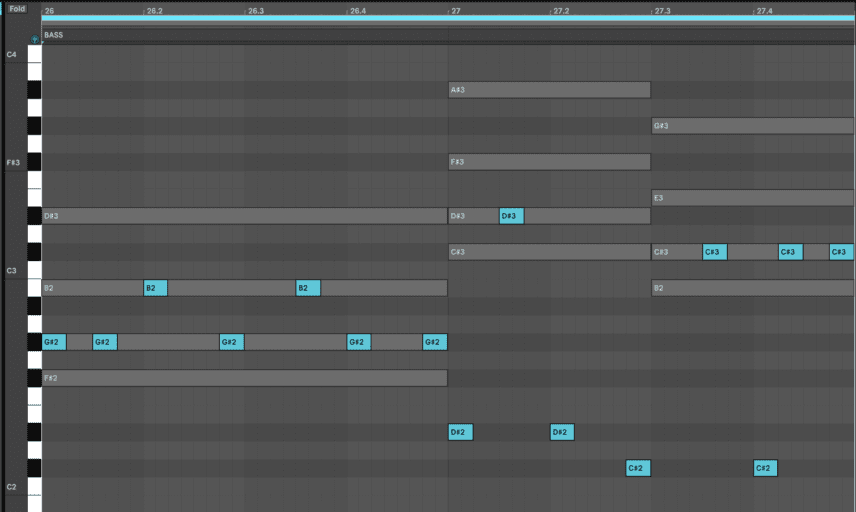
All chords are within the key of G# minor 7, a key which was definitely one of KC’s go-to’s, and all of the voicings are the same familiar third inversion seventh chords. As the voicings are all the same, this is an example of parallel motion.
Parallel motion is very common in house music as it can be easily recreated with a chord trigger MIDI effect. Loading up a nice electric piano patch, turning on a chord trigger and then trying out different riffs using parallel chords is certainly something KC would have done even though he was a keyboard player. Another one of his well-known tracks featuring parallel motion is ‘Bar a Thym’.
As with the previous two examples, the bass part in ‘Come Home’ is more active compared to the sustained chords.
Our loop:
In part two, we’ll take a look at how he uses pedal bass and more complex chord progressions.


